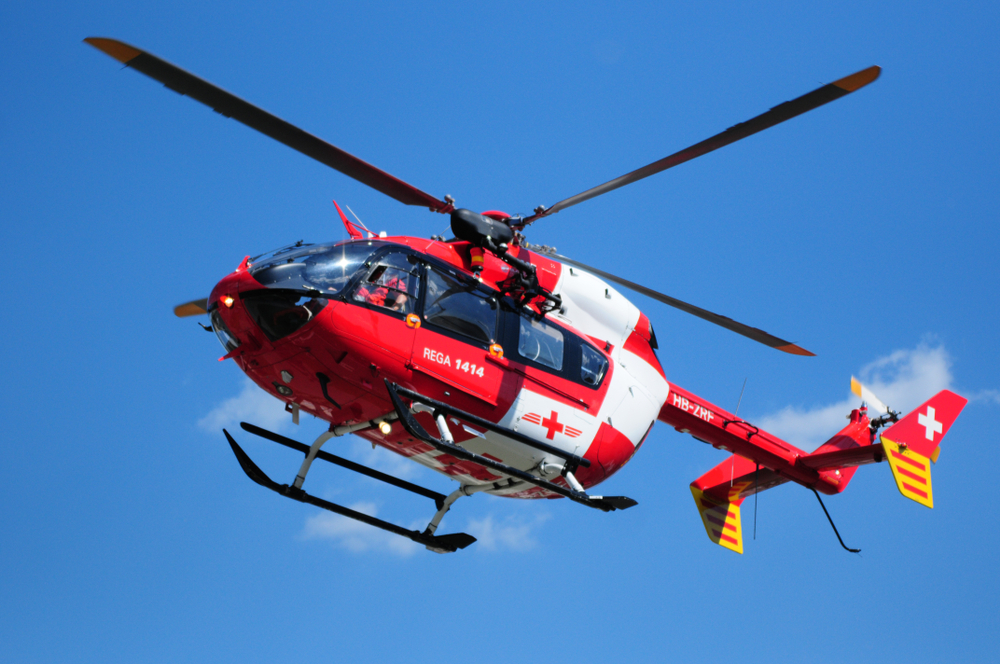Fall with consequences
Alois H. was seriously injured in his fall in the garden in January last year. The Schaffhausen hospital called was overloaded and sent the rescue helicopter that flew Alois H. to Zurich. Alois H.'s life partner canceled the emergency call because she thought her partner was in great danger. Only in the year after that he had suffered a stroke, now there were great fears that it would be another catastrophe.
For Alois H. the flight with the rescue helicopter goes directly to Zurich to the hospital, after it could only be stabilized on site. The Air Alpine Ambulance was quickly on the spot and flew to the University Hospital in Zurich. One day later, Mr. H. was allowed to return home. But despite all the relief, the disillusionment soon came: Three invoices arrived in a row, Mr. H. was now supposed to pay the ambulance service and the emergency doctor. The costs amounted to 2,000 francs, he was supposed to pay around 1,100 francs himself. Then there was the bill for the helicopter, which was supposed to cost 5,000 francs. Alois H.'s share was 3,000 francs. In total, this is 4,100 francs that Alois H. is now supposed to pay. Unfortunately, he doesn't know how to bear the costs and believes that his own rescue has ruined him.
That's what the law says
The described case has already been fatal for many people. You were brought to the hospital for an emergency and had to dig deep into your pockets afterwards. Depending on the region, transport by ambulance alone can cost up to CHF 2,000, and health insurance usually only covers half of that. Rescue by helicopter will be a lot more expensive.
If Rega organizes the rescue itself, the costs for the rescue operation can be reduced or eliminated entirely. However, if the Alpine Air Ambulance (AAA) arrives, the costs are passed on to the patient, even if there is a Rega patronage. This only covers the costs for Air Glacier and Air Zermatt operations. Thus the present invoices are indeed a financial catastrophe for Alois H., but they were justifiably issued. Such a burden can only be avoided with additional insurance offered by health insurance companies. Under certain circumstances, the entire transport costs are covered there.
However, if the transfer to another hospital has been ordered by the treating hospital, the costs will again be covered by the basic insurance. In the case of Alois H., this means that the costs would not have been incurred if the emergency doctors had brought Mr. H. to the cantonal hospital in Schaffhausen first and only then had the transfer by helicopter occurred due to the overload. Then only the rescue costs for the emergency doctor and the ambulance would have been due, but not for the flight with the AAA. But the Schaffhausen Hospital does not declare the flight to be relocated due to overload and so Alois H. remains at his expense. The reason given for this is that Mr. H. had neurological abnormalities that would have made a transport to the university clinic necessary due to his previous history.
In the meantime, Alois H. has paid the rescue and emergency doctor's costs and has begun paying off the costs of the helicopter. Unfortunately, in the meantime, a debt collection company has been called in, which in turn would like to claim default damages and interest.
Conclusion: Take out additional insurance as a useful addition to basic insurance
One of the most important supplementary insurances to the basic insurance includes the transport costs in an emergency. Otherwise, this can mean financial ruin and there is no legal remedy to protect yourself from legitimate claims in the event of a helicopter rescue.







